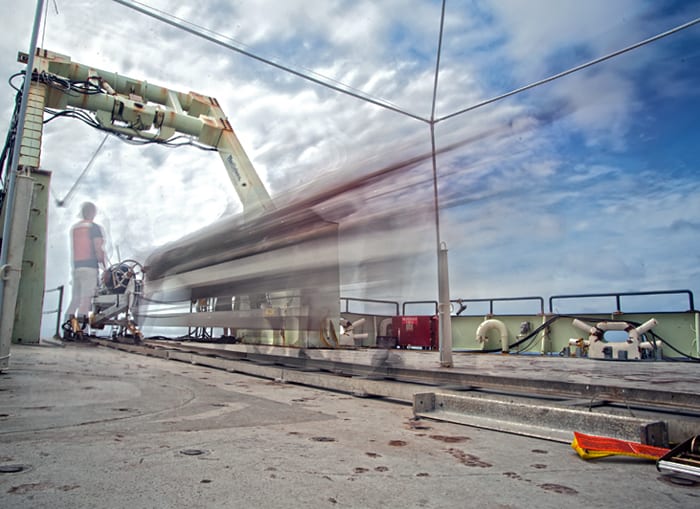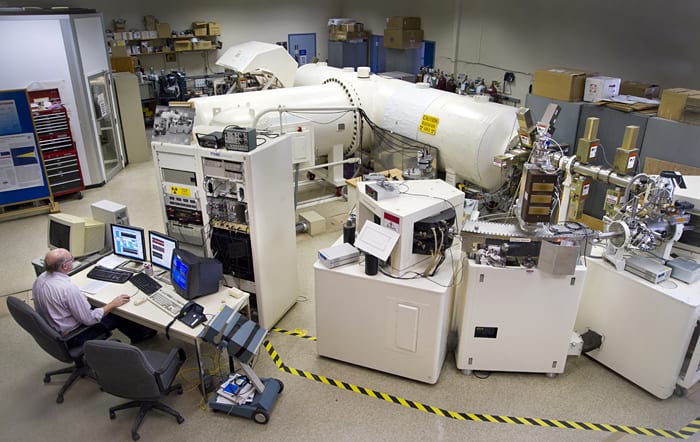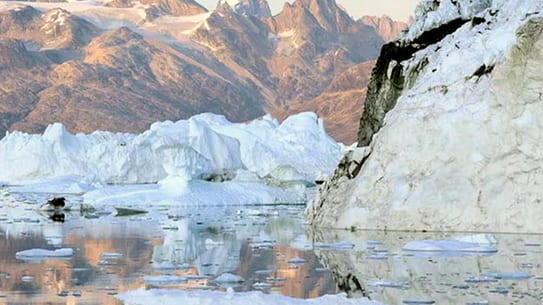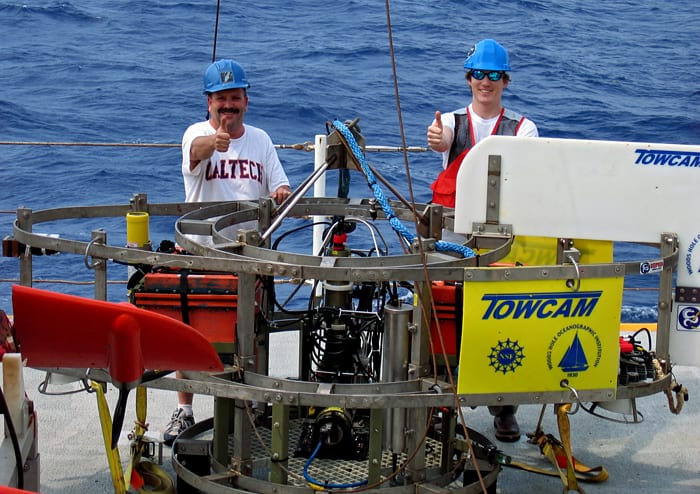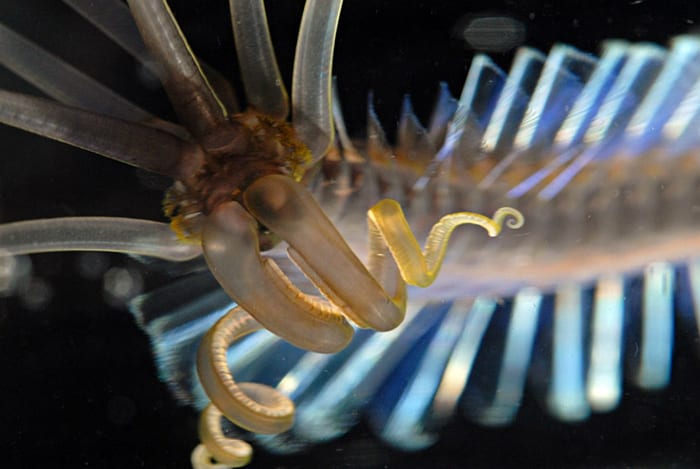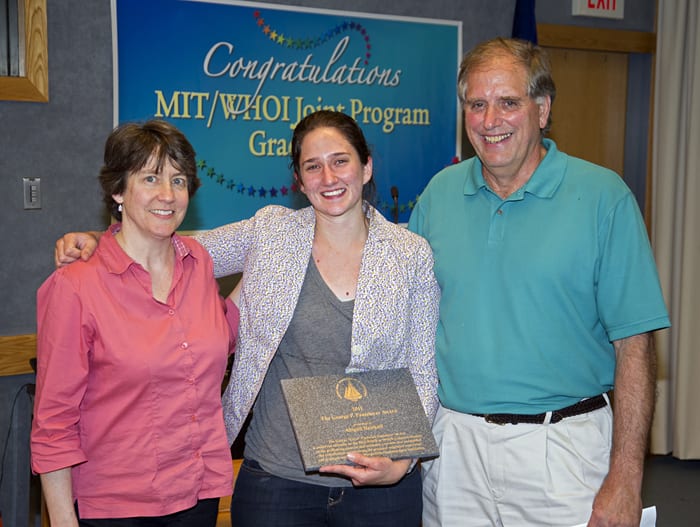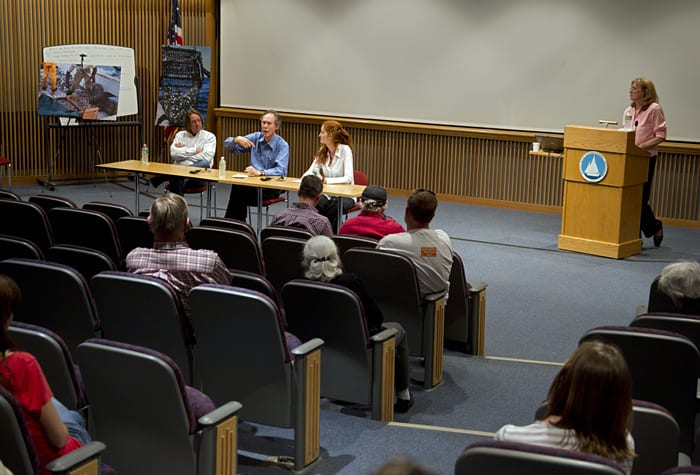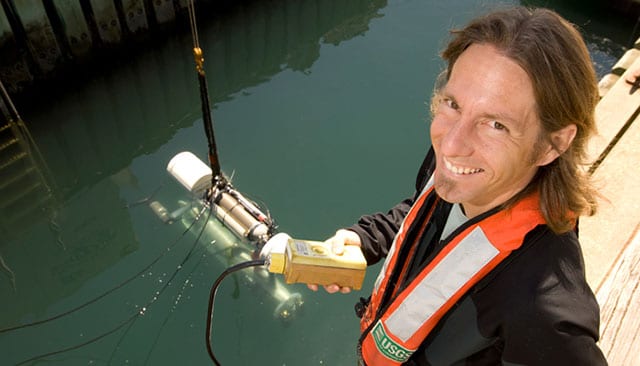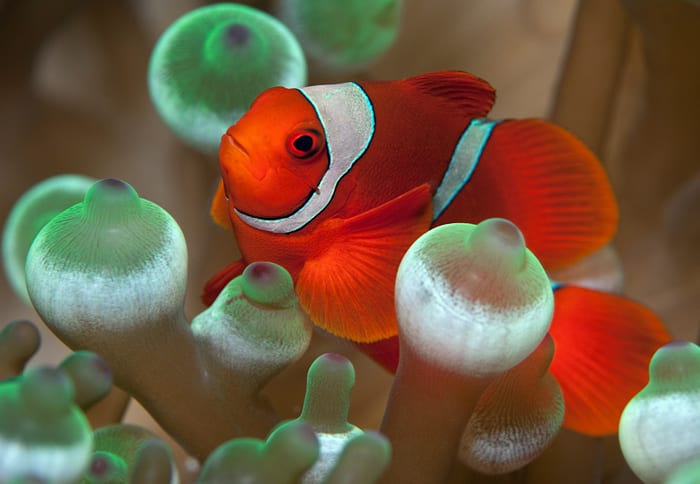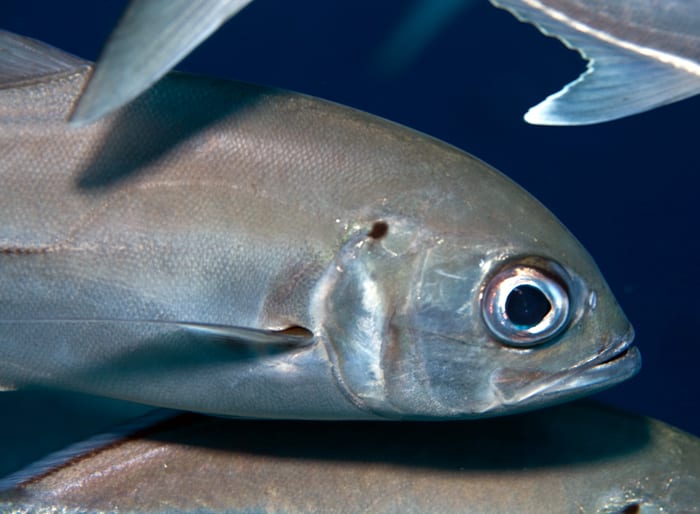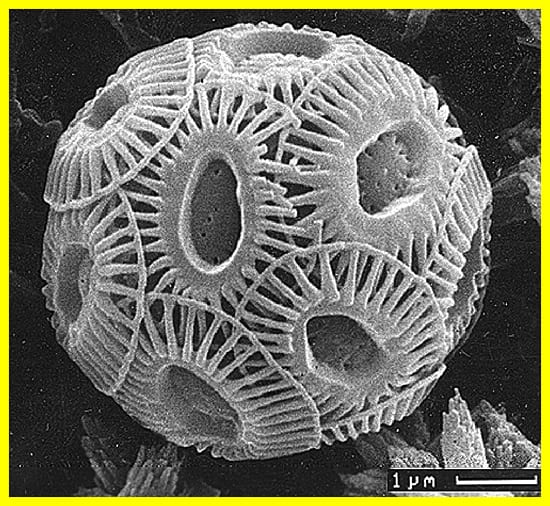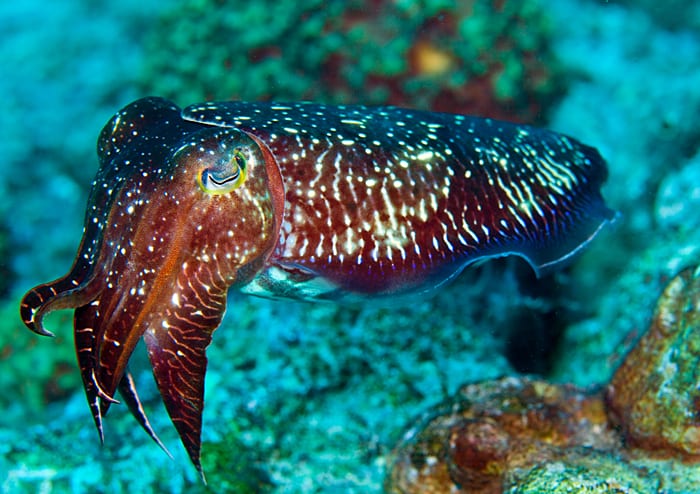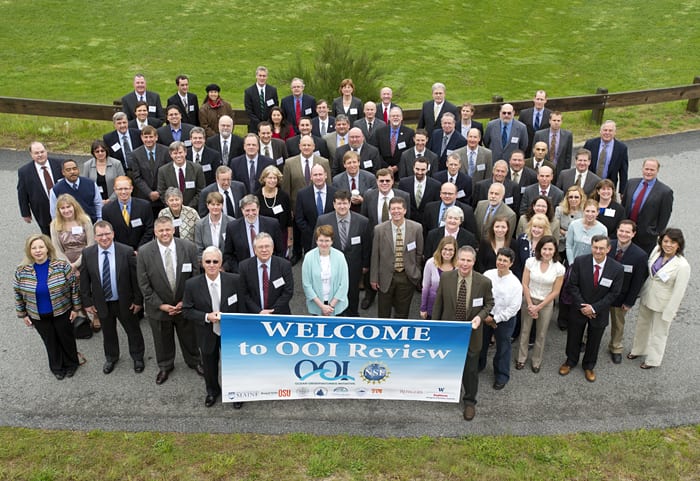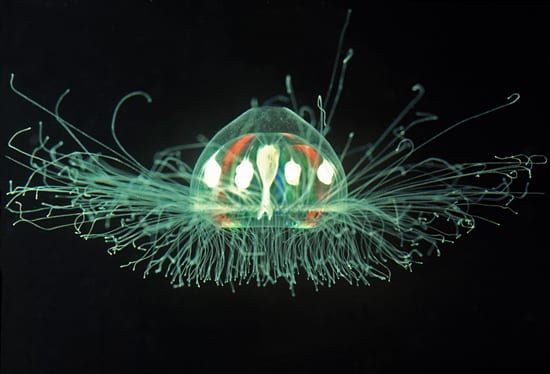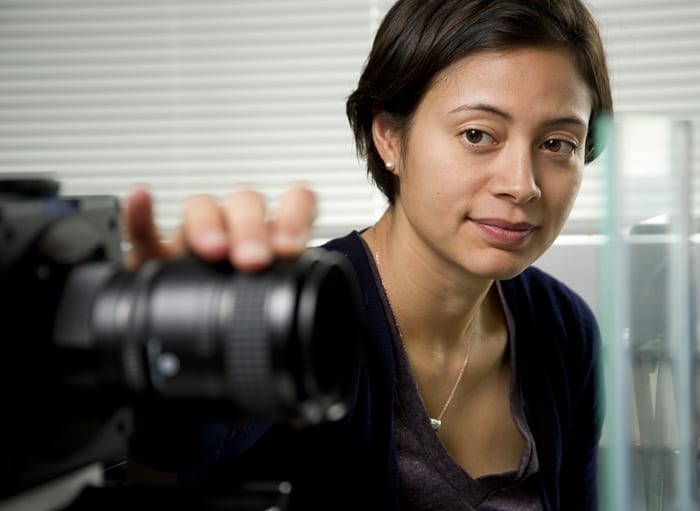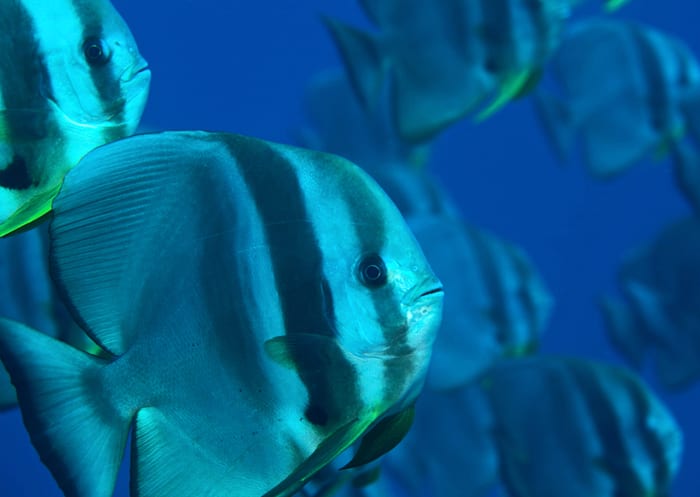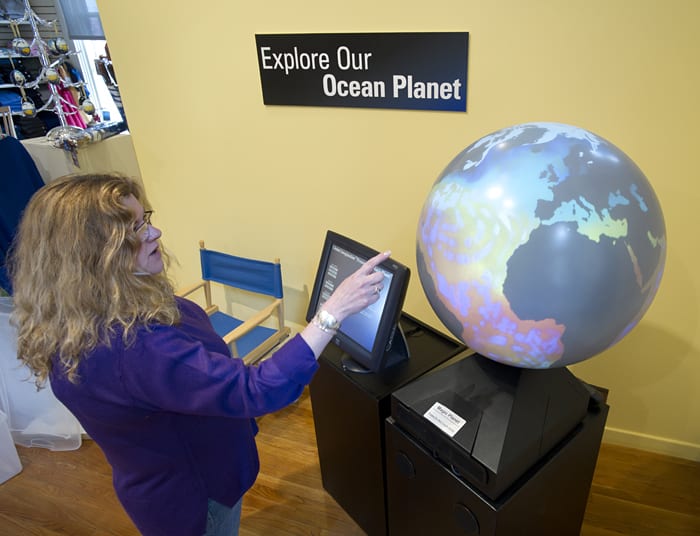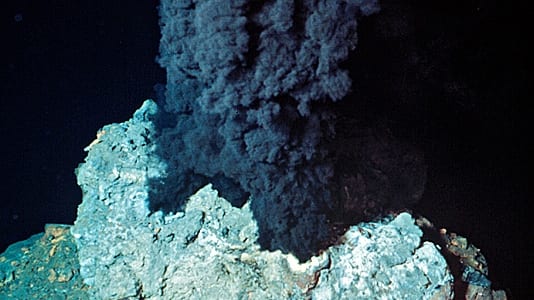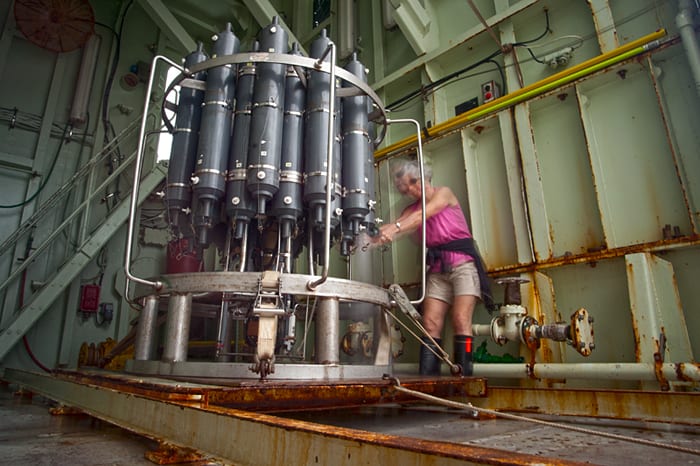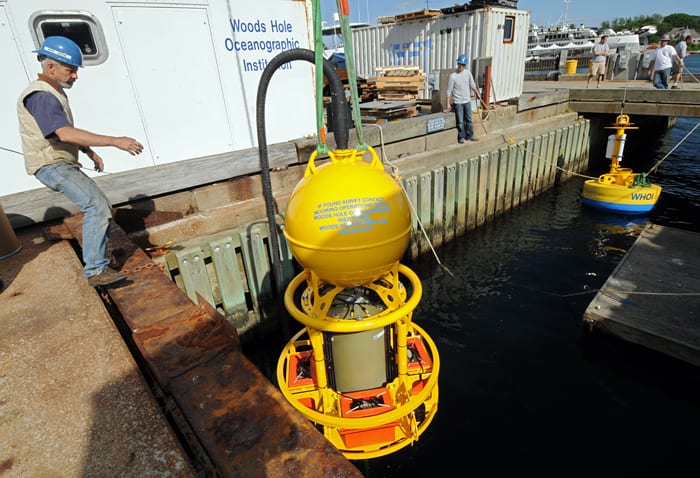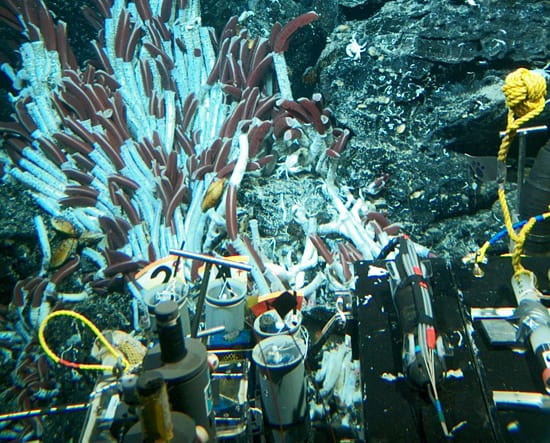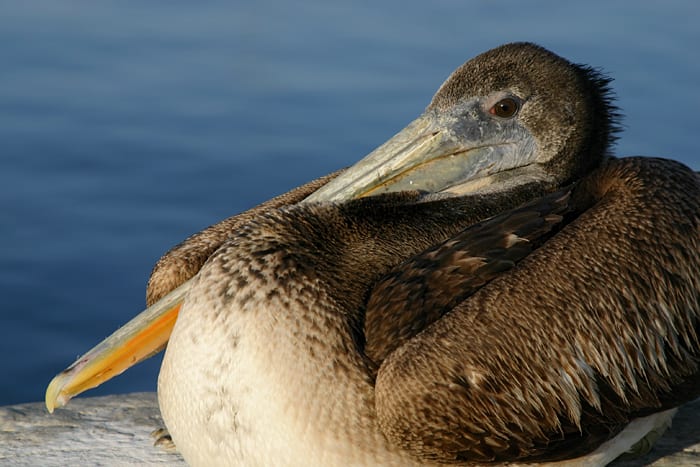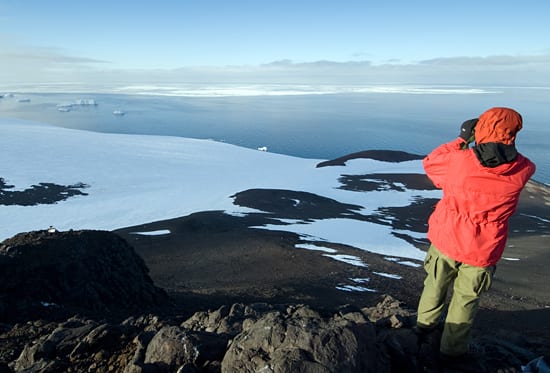Multimedia
Science in the Fast Lane
Life aboard a research vessel moves quickly. In this time-lapse photo from the R/V Knorr, Chief Scientist Ruth Curry oversees the deployment of the High Resolution Profiler (HRP) in the western…
Read MoreHow Old? The Carbon Knows
Karl von Reden, staff physicist, is shown working at the WHOI-based National Ocean Sciences Accelerator Mass Spectrometry (NOSAMS) facility. The facility is used to carbon date organic and inorganic material…
Read MoreA Rising Tide
WHOI’s Fiamma Straneo explores how ocean conditions affect Greenland’s melting glaciers—and the challenges of Arctic research.
Read MoreTwo Thumbs Up
In April 2011 aboard NOAA’s ship R/V McArthur II, WHOI engineer John Bailey (left) and researcher Miles Saunders (Penn State) signal that TowCam is ready to go back into the…
Read MoreIn Your Face
An up-close view of this sea creature gives an impression of squirmy tentacles and bars of metallic light, like a monster from a summer movie. The tentacles are actually sensory…
Read MoreGraduating with a Special Honor
Graduating MIT/WHOI Joint Program student Abby Heithoff (center) received the Panteleyev Award from Associate Dean Meg Tivey and Dean Jim Yoder at the 2011 Joint Program Graduate Reception in June.…
Read MoreSeafood Supply Discussed
In May, Hauke Kite-Powell of the WHOI Marine Policy Center convened a range of experts in a colloquium to discuss economic and policy aspects of U.S. seafood supply, trends in…
Read MoreFrom Pac-Man to the Seafloor
WHOI/MIT graduate student Clay Kunz looks for a better way to build an underwater robot.
Read MoreTag, You’re It
Scientists have long been able to tag animals on land and follow their movements and habits. But tagging and tracking fish, like this spinecheek anemonefish, through vast oceans is a Herculean task.…
Read MoreThe Better to See You With
A bigeye trevally (Caranx sexfasciatus) casts a wary eye on WHOI biologist Simon Thorrold, who photographed this and many other species during a recent research trip to the coral…
Read MoreMicrobial Life
Sleepy Sepia?
A cuttlefish (Sepia sp.) appears to be dozing above a coral reef in Kimbe Bay in Papua, New Guinea. WHOI biologist Simon Thorrold has been working in the area as…
Read MoreOn the Path To an Ocean Observing Network
The week of May 16th, a panel of nearly 150 leaders of large research infrastructure programs visited WHOI for the Annual Review Meeting for the Ocean Observatories Initiative (OOI). This…
Read MoreJellyfish & Other Zooplankton
Shellfish
On the Move
WHOI Postdoctoral Scholar Kakani Katija studies the power sources that propel water movement in oceans. Katija’s evidence in biogenic ocean mixing shows that the movements of sea creatures could have…
Read MoreBats out of the Blue
Fish ecologist Simon Thorrold‘s research on pristine coral reefs in Kimbe Bay, Papua New Guinea yields both scientific results and beautiful images—such as these Teira batfish (which can grow to…
Read MoreExplore Our Ocean Planet
WHOI Ocean Science Exhibit Center manager Kathy Patterson uses the Magic Planet projection system to demonstrate global ocean processes at the center. The Magic Planet exhibit helps people to better…
Read MoreHydrothermal Vents
Running Hot and Cold
Researcher Terry McKee drains excess water from bottles on the rosette sampler after taking samples for analysis of water properties. This May-June 2011 cruise on R/V Knorr, led by scientist…
Read MoreWatching for Red Tides
Senior engineering assistant Will Ostrom guides an Environmental Sample Processor (ESP) into the test well at the WHOI dock in early June 2011. The ESP is a seagoing lab: it…
Read MoreLife at Vents and Seeps
Spying a pelican, briefly
A Peruvian pelican near Arica, Chile, just before the BiG RAPA cruise, headed by WHOI scientist Dan Repeta, left in November for work in the Chilean upwelling system just south…
Read MoreScanning the Bottom of the World
Grant Ballard of the Point Reyes Bird Observatory scans the open water off Cape Crozier during a 2007 expedition to Antarctica to study Adélie penguins and effects of climate change…
Read More
